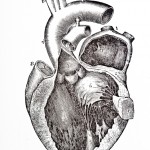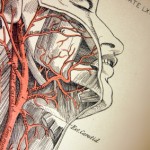In April I became three-quarters of a century old. I am basically healthy and I'm in the gym six days a week although I've got five orthopedic/metabolic issues even after having a right total knee surgery fifteen years ago and three low back operations. The "Curse of the Springbergs'" back continues to plague me; a nerve in the left side of my neck is pinched from time to time; my right shoulder is intermittently painful; I have a trigger finger on my dominant hand and I've had, in the last four months three attacks of gout or perhaps pseudogout, where the crystals deposited aren't uric acid,, but a calcium compound. My recent blood test for my uric acid level was right in the middle of the accepted normal range; that doesn't mean the attacks weren't gout, but deterred my podiatrist from giving my a prescription for allopurinol which could potentially prevent further attacks.
On the other hand, my brain still works pretty well and I'm below my college wrestling weight, so I would potentially be interested in living a long life and treating those nagging, but admittedly minor ailments.
Most members of my family have lived to considerable ages, with only one self-inflicted exception (not suicide, just terrible eating habits resulting in gaining fifty pounds plus really poor adherence to medications prescribed). My mother died at ninety, my father was nearly ninety-five, his sister was ninety and three aunts on my mother's side lived to ninety.
So I was intrigued by an article that appeared in The New York Times recently titled "Chasing Immortality: Dogs Test Drug Aimed at Humans' Biggest Killer: Age. (1)
We typically think of people in developed countries dying, as my wife did in late December at age seventy-five, of a stroke, or as my brother (vide supra) did at fifty-seven, of a heart attack. Cancer, diabetes and Alzheimer's (and other dementias) are also common causes of death in our population, but the article pointed out that "treatment breakthroughs" for these maladies, although crucial for those affected, would likely increase our overall populations life expectancy by just a few years.
I looked at the reference cited in the article. It's a 1990 article in the journal Science and only the abstract is easily available, but its bottom line was even if we found cures for those "major degenerative diseases," it would only result in raising the life expectancy at birth to 85 years, not the Biblical 120, much less even longer life spans.
Now there's a canine trial of rapamycin, a drug first isolated in 1972 from a bacteria found on Easter Island and named after the native designation for that island, Rapa Nui. It was originally developed to fight fungal infections, but later used in preventing organ transplant rejections. It has been shown to increase lifespan in mice. Whether rapamycin slows down aging, however, remains unclear. The life-extending effect seems to be related to rapamycin's suppression of tumors, which represent the main causes of death in in those animals. (2)
The early results in canines are promising, but the research reported is what's termed by the NIH as a Phase One study, a relatively brief test of a new drug in a small group of subjects to evaluate its safety, determine a safe dosage range, and identify side effects. Bela, the eight-year-old dog featured in the article may have been given rapamycin or may actually be receiving a placebo.
After Phase One we would have considerable time before humans got the drug in a clinical trial, much less having the drug available to your physician or mine for more general use. The dog studies would likely go through Phase Two and Phase Three studies; then there would be considerable discussion before a human Phase One test was started. And there are other phases to accomplish before approval of rapamycin for the purpose of life extension in our species. I copied and pasted definitions of those phases for you and added a few comments.
Phase II studies test the efficacy of a drug or device (Does it work for the particular purpose intended, in this case extending our life span?). This second phase of testing can last from several months to two years, and involves up to several hundred patients. Most phase II studies are randomized trials where one group of patients receives the experimental drug, while a second "control" group receives a standard treatment or placebo. Often these studies are "blinded" which means that neither the patients nor the researchers know who has received the experimental drug. (This is crucial since the hope is to eliminate the "placebo effect...I got the new medicine; I'm feeling better, so it must be from that drug. This is called the "Post hoc, ergo propter hoc" fallacy. It happened after X, so it must have been caused by X. An extreme and silly example would be the sun came up and shortly thereafter I had a car accident, therefore sunrise causes car crashes.) A Phase Two study allows investigators to provide the pharmaceutical company and the FDA with comparative information about the relative safety and effectiveness of the new drug. About one-third of experimental drugs successfully complete both Phase I and Phase II studies.
Phase III studies involve randomized and blind testing in several hundred to several thousand patients. This large-scale testing, which can last several years, provides the pharmaceutical company and the FDA with a more thorough understanding of the effectiveness of the drug or device, the benefits and the range of possible adverse reactions. 70% to 90% of drugs that enter Phase III studies successfully complete this phase of testing. Once Phase III is complete, a pharmaceutical company can request FDA approval for marketing the drug. (This is the one we should wait for when we read early reports of a new medication that may help a medical issue we are afflicted with).
Fortunately, there is another phase, one that has a number of purposes that drug companies are interested in, but one that can protect our larger population, especially when the new use of an old drug leads to a much larger group of us being exposed to the drug.
Phase IV studies, often called Post Marketing Surveillance Trials, are conducted after a drug or device has been approved for consumer sale. Pharmaceutical companies have several objectives at this stage: (1) to compare a drug with other drugs already in the market; (2) to monitor a drug's long-term effectiveness and impact on a patient's quality of life; and (3) to determine the cost-effectiveness of a drug therapy relative to other traditional and new therapies. Phase IV studies can result in a drug or device being taken off the market or restrictions of use could be placed on the product depending on the findings in the study. (I underlined the last sentence, as this is a further protection for those of us in the general population, assuming we weren't lucky enough to be in a study group. I have a friend who had cancer, with a recurrence after surgery, but got into a Phase Three study and is now cancer-free.)
I found a list of 35 such medications, including Quaalude and Vioxx that have been withdrawn from the market in the last forty or so years. Quaalude is now a Schedule One drug, taking its place alongside heroin. Vioxx was implicated in over 27,000 deaths. (3)
It's a juggling act, to use a phrase that may seem inappropriate. What if rapamycin extended the life span of 98% of those who got it long-term, but severely damaged or even killed 2%. Would you take the drug under those circumstances? Would you want it banned from being prescribed?
What if, in extending human life span, it also allowed time for researchers to come up with treatments or even cures for that list of the major killing diseases?
Mull over those tough questions...we've got a few years before they need to be answered.
Links: (1) http://www.nytimes.com/2016/05/17/us/aging-research-disease-dogs.html?_r=0 (2) https://www.sciencedaily.com/releases/2013/07/130725141715.htm (3) http://prescriptiondrugs.procon.org/view.resource.php?resourceID=005528







